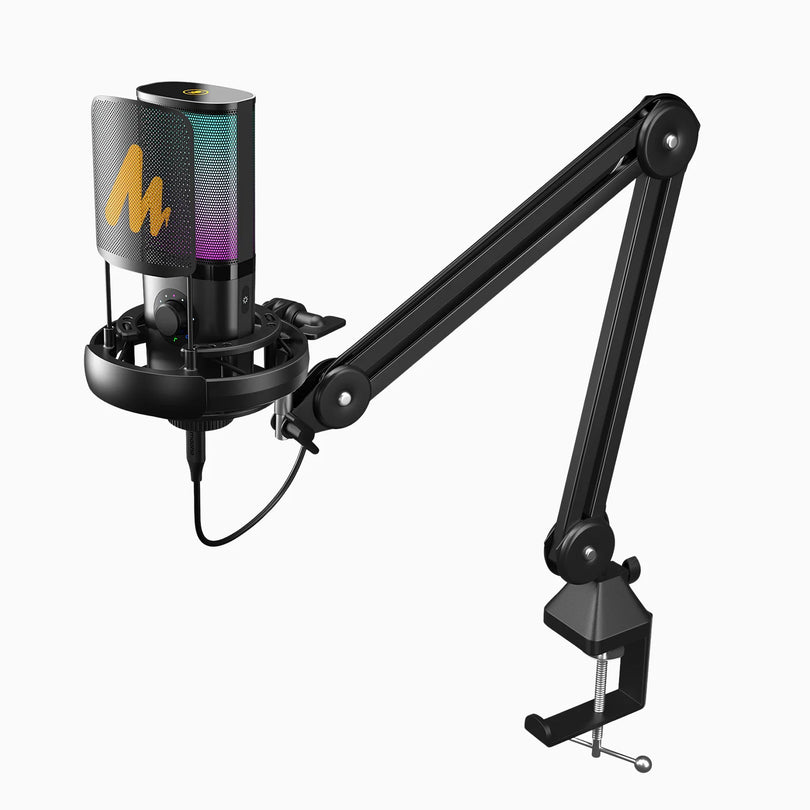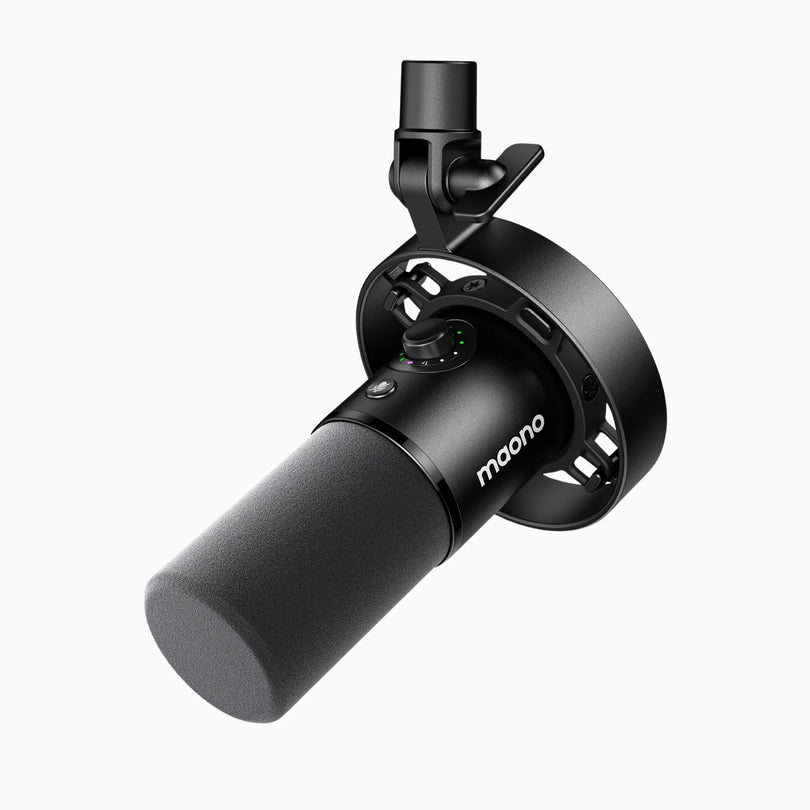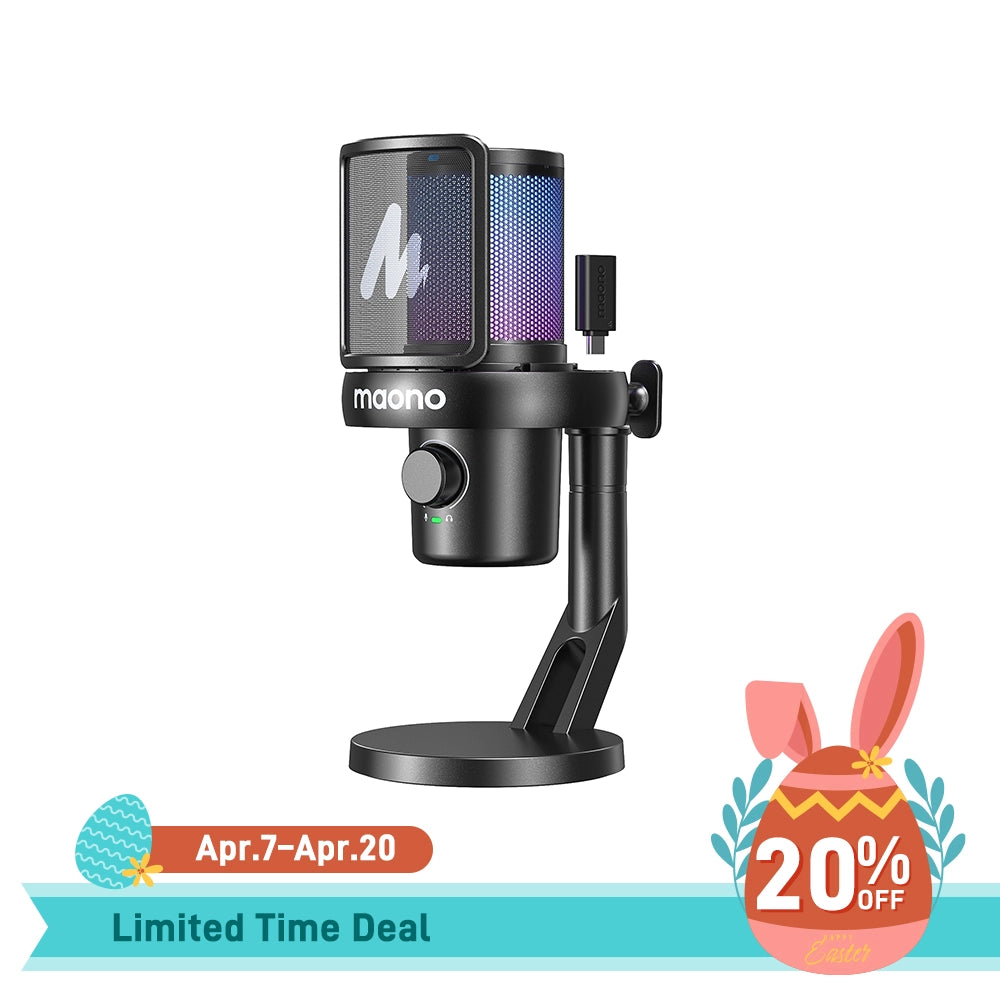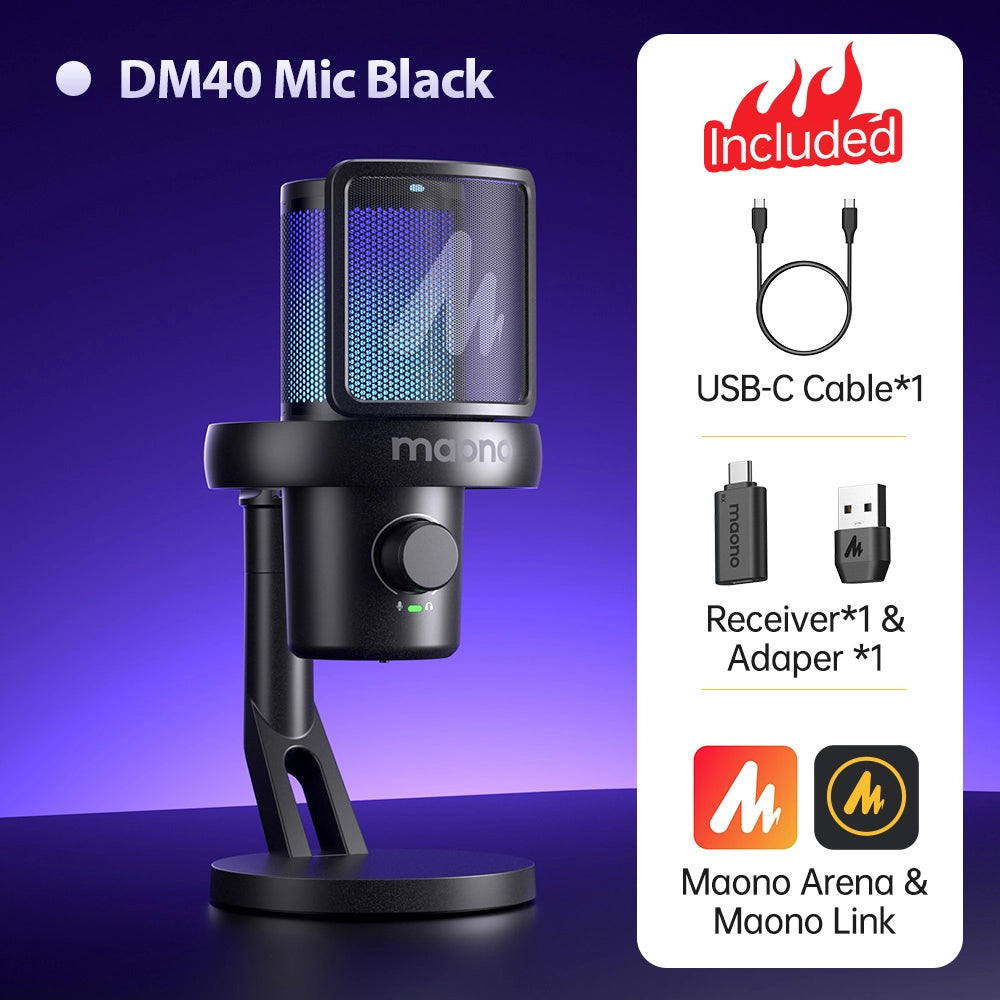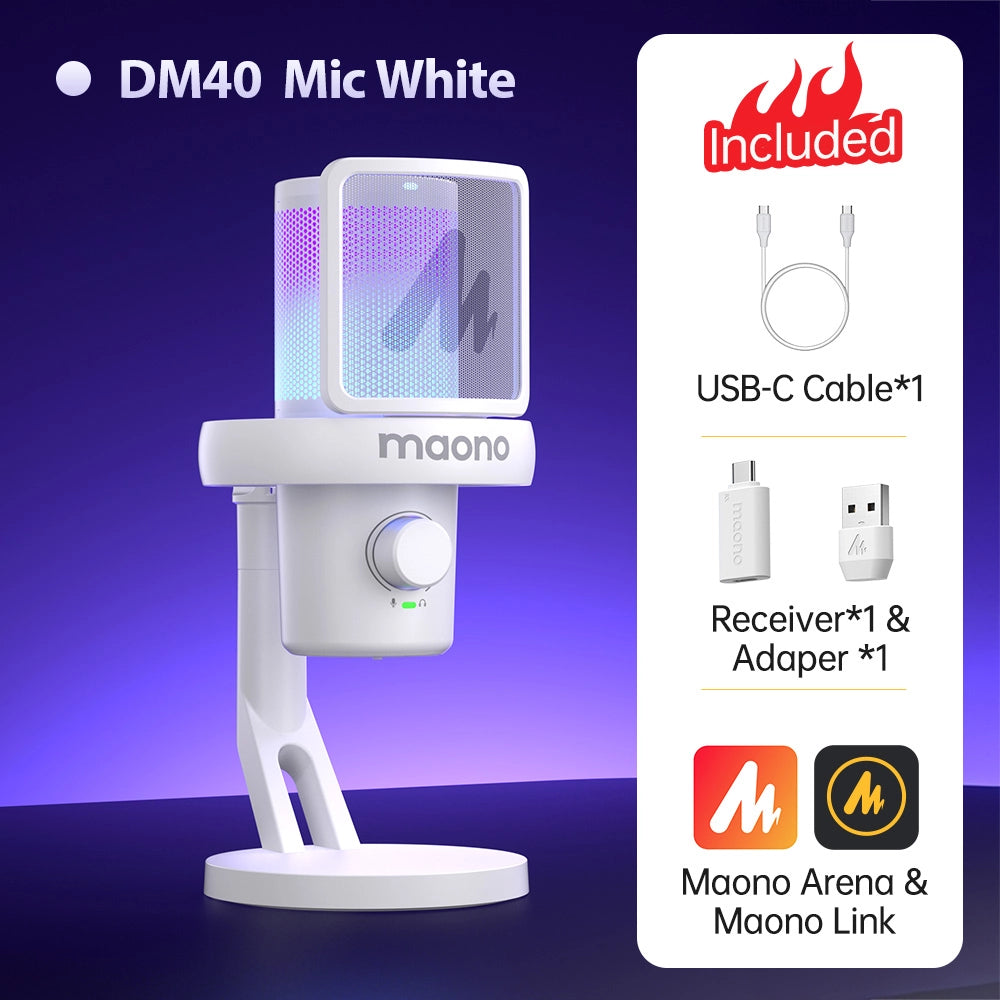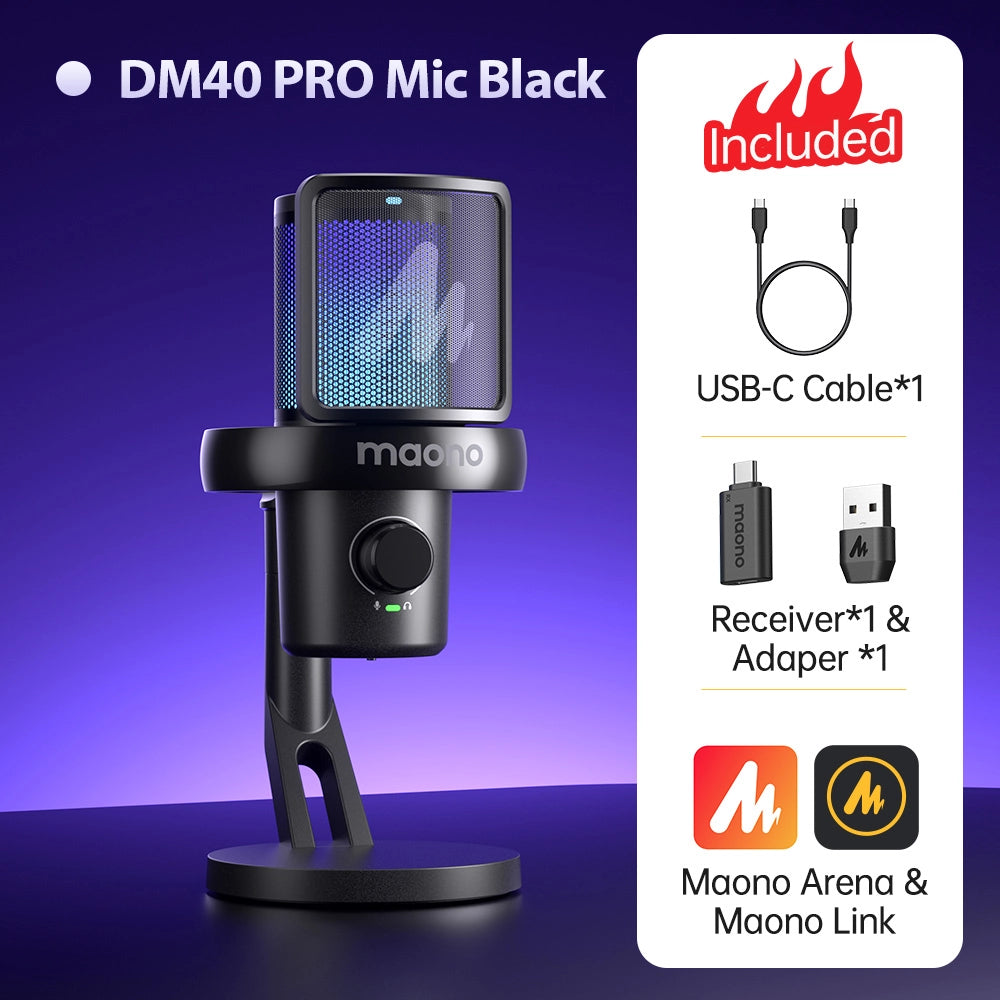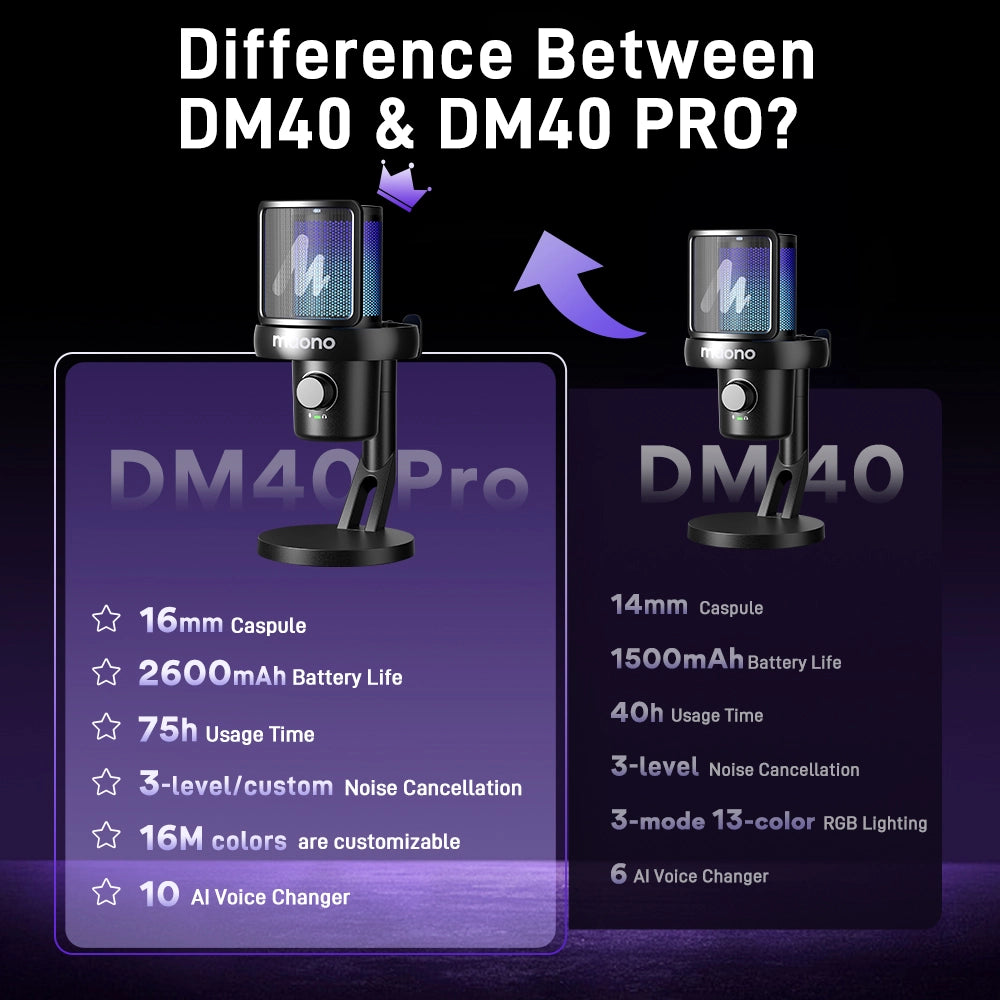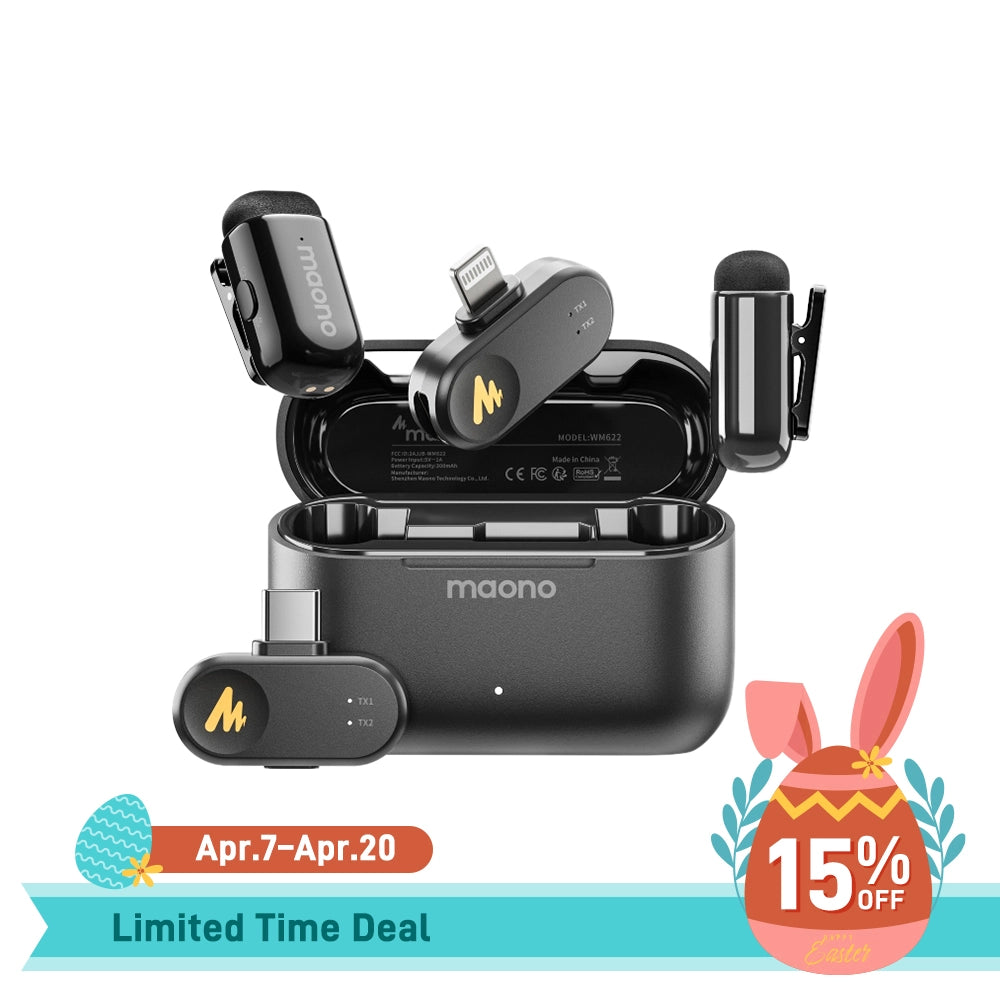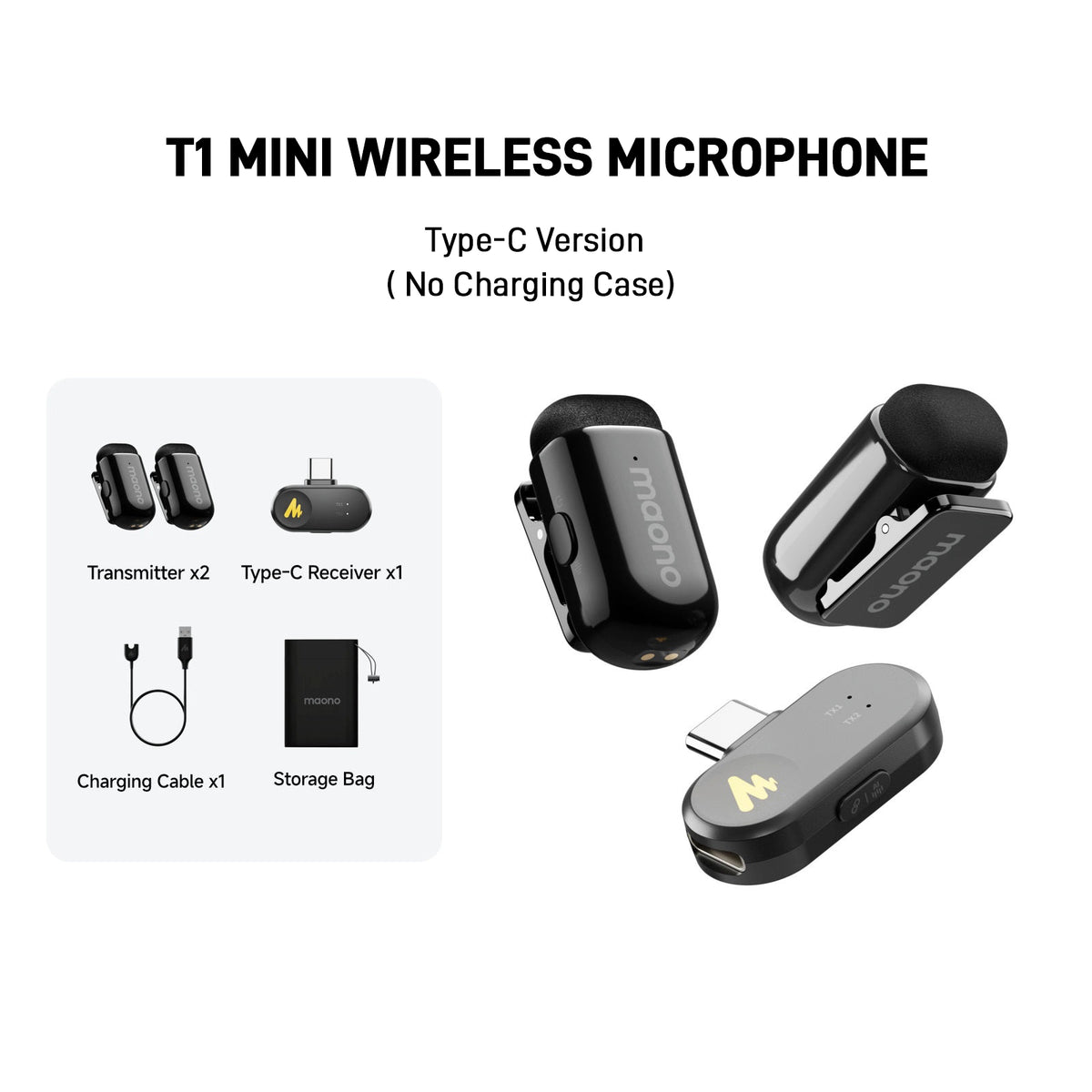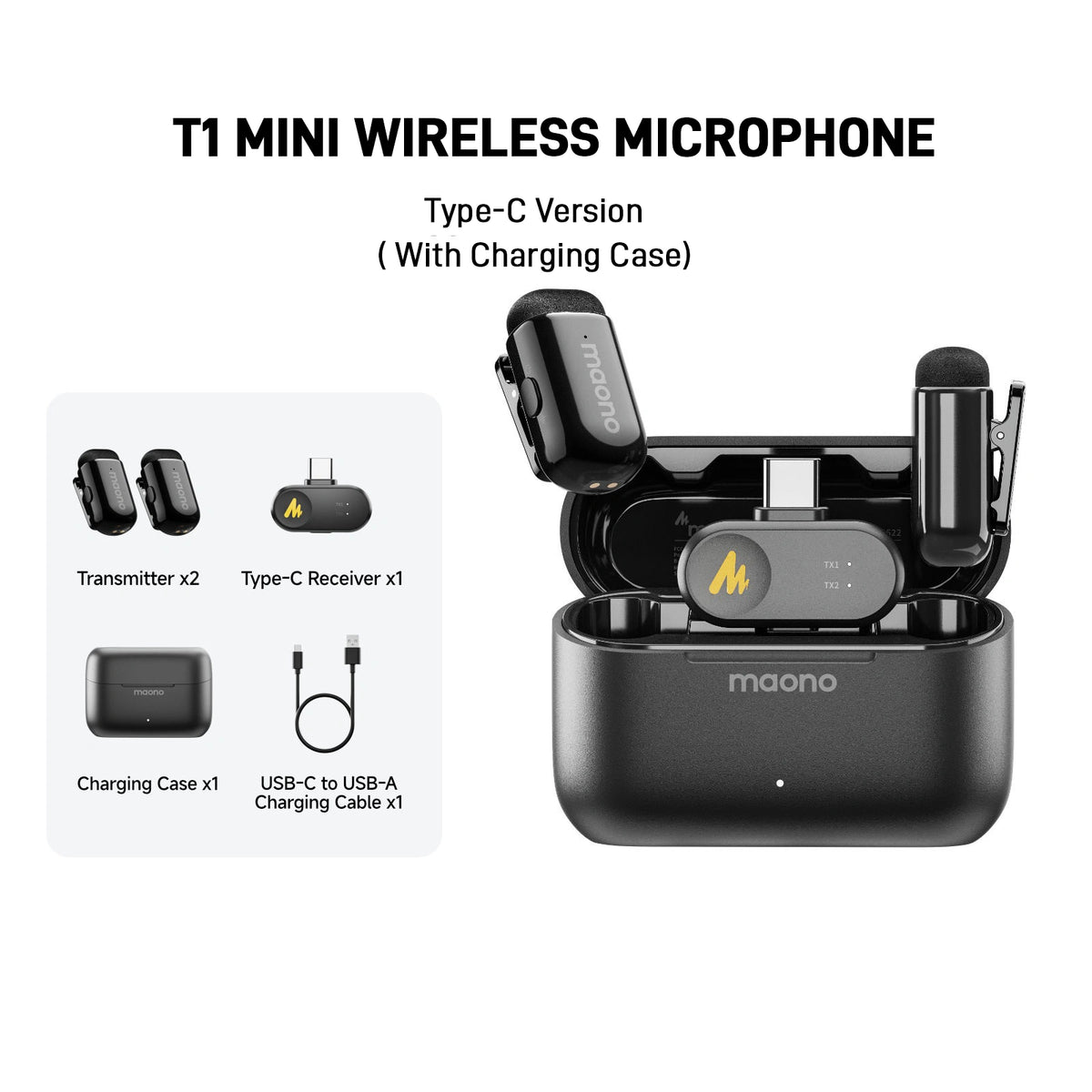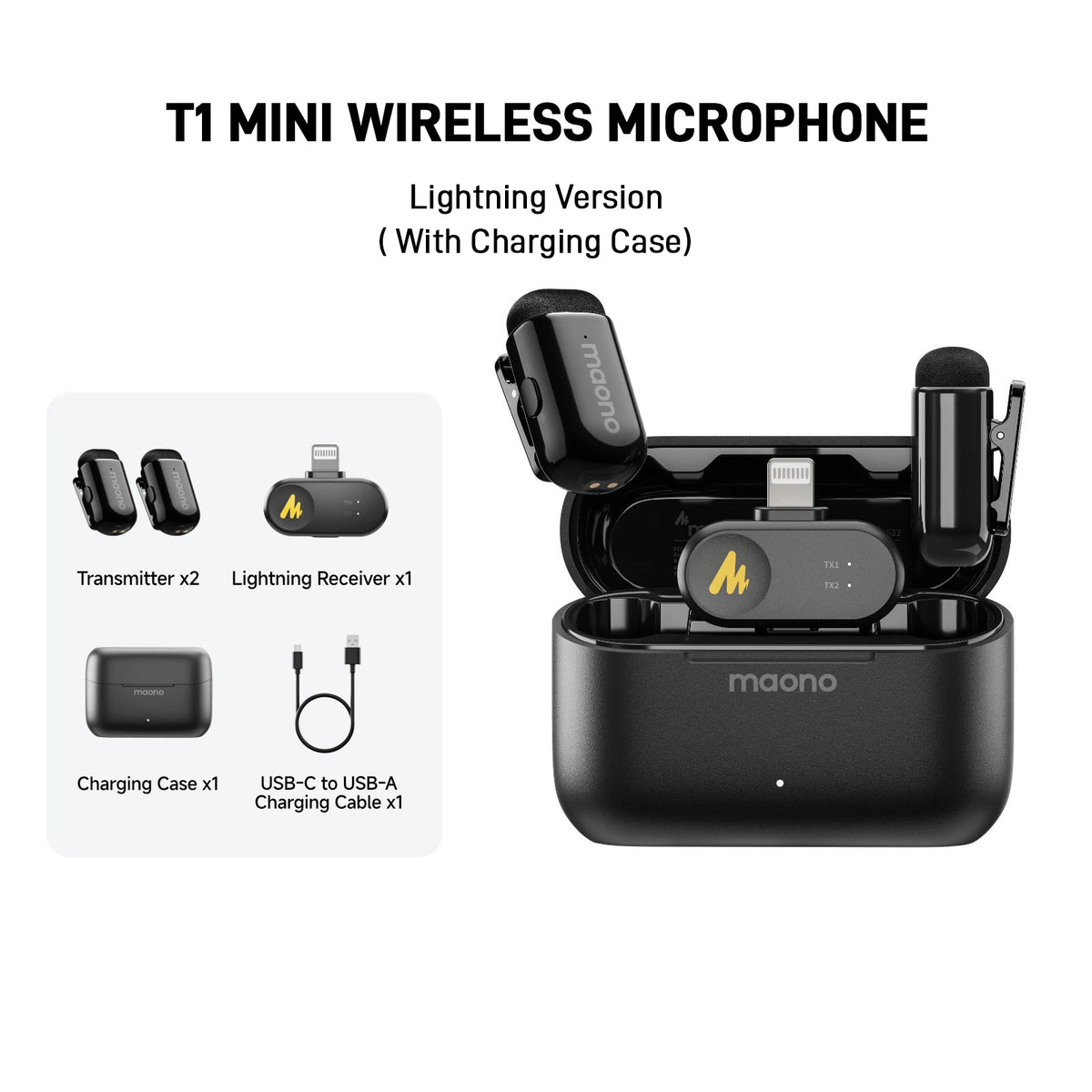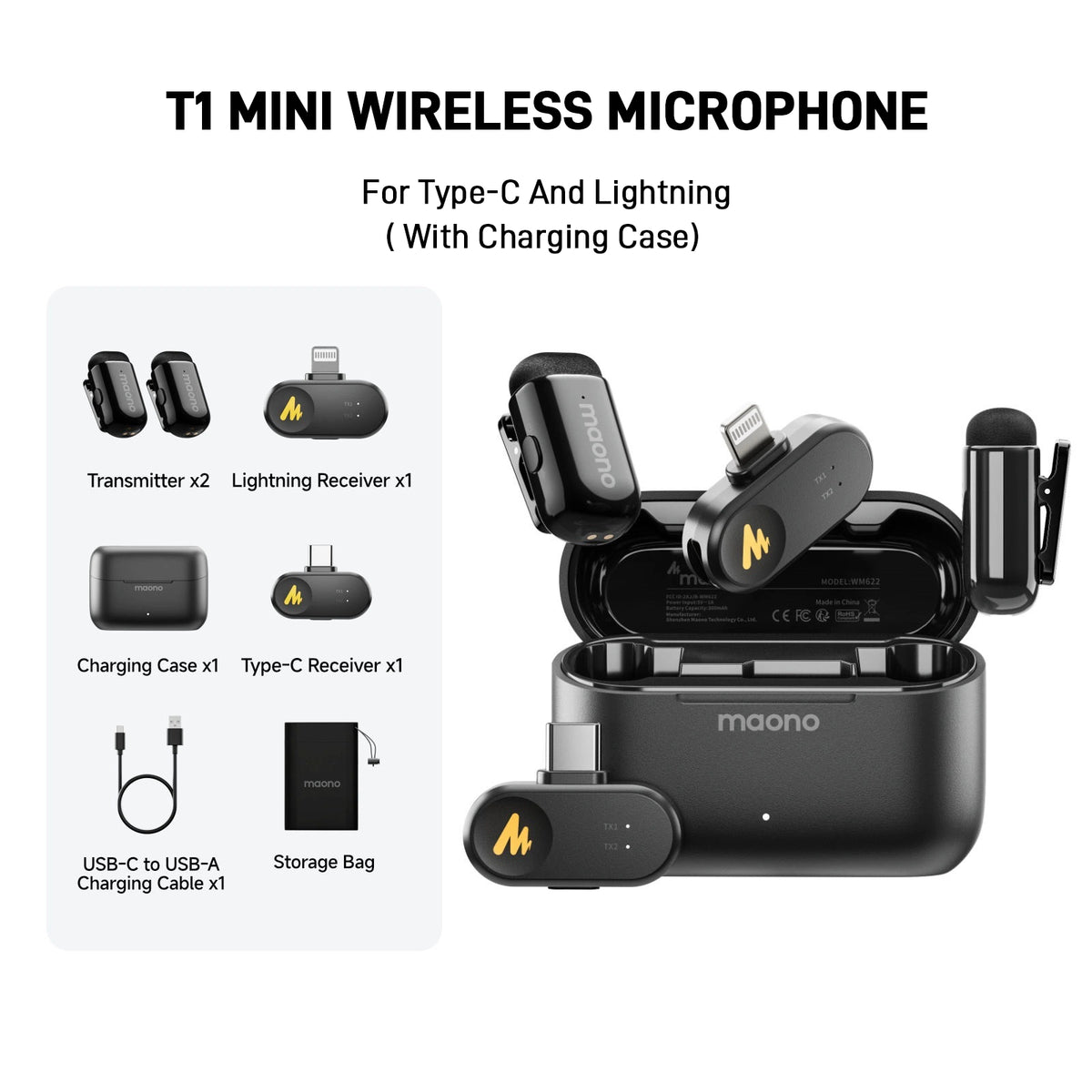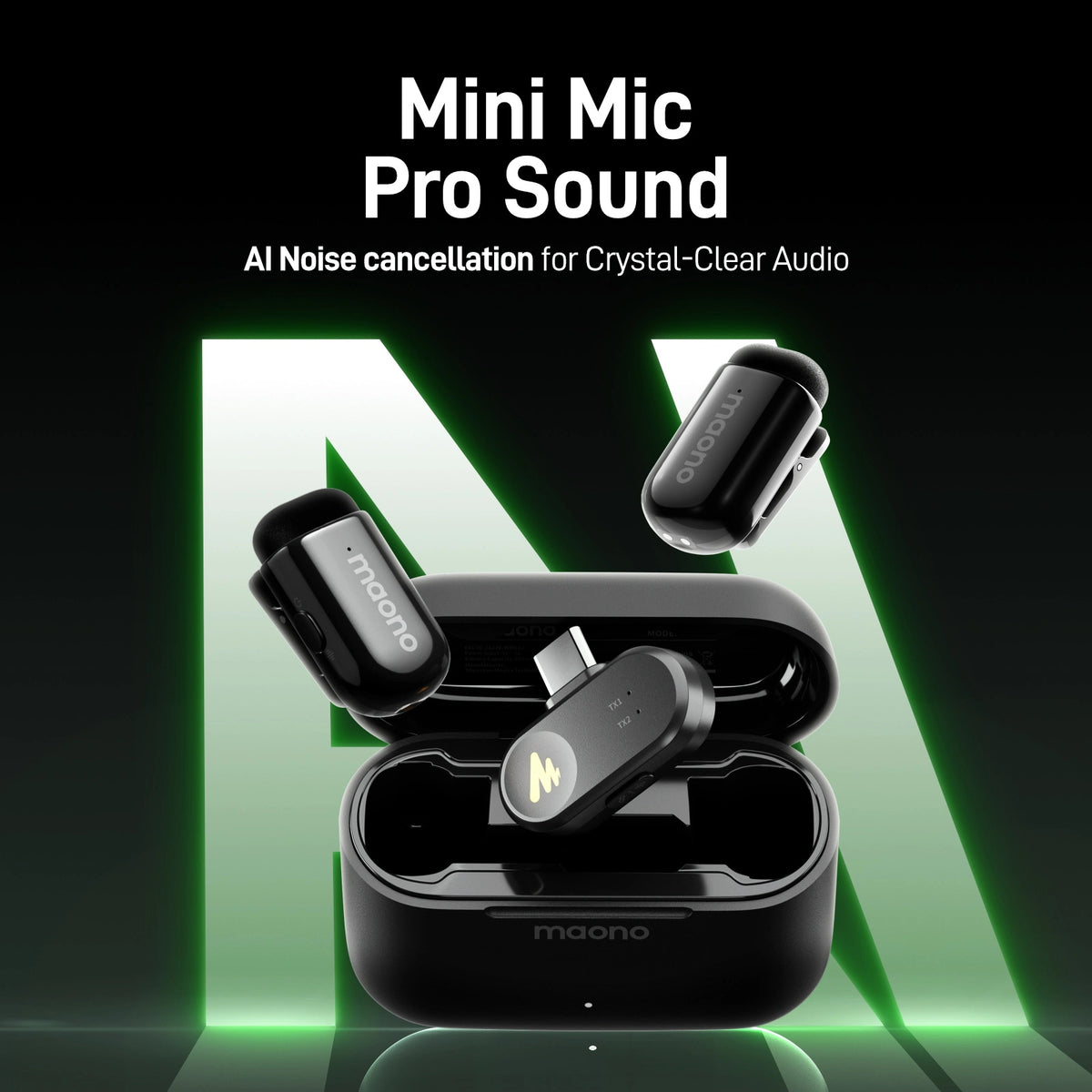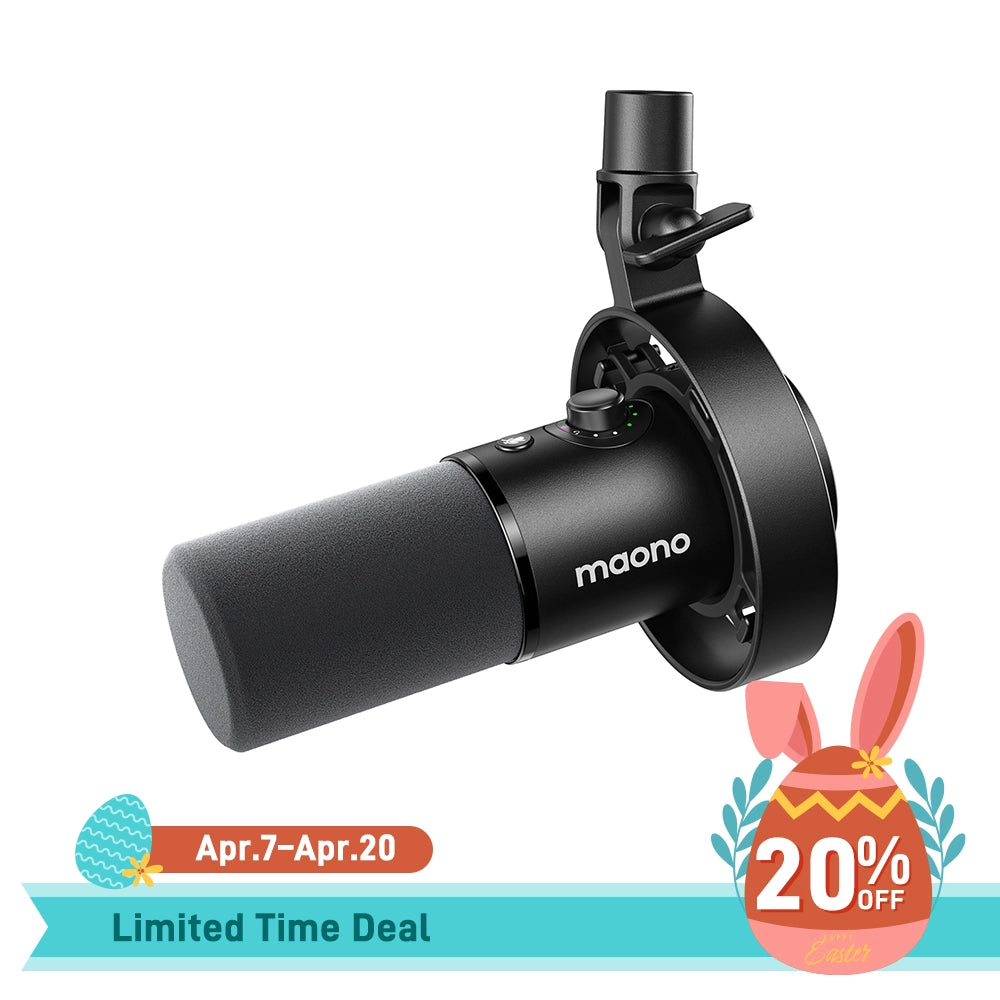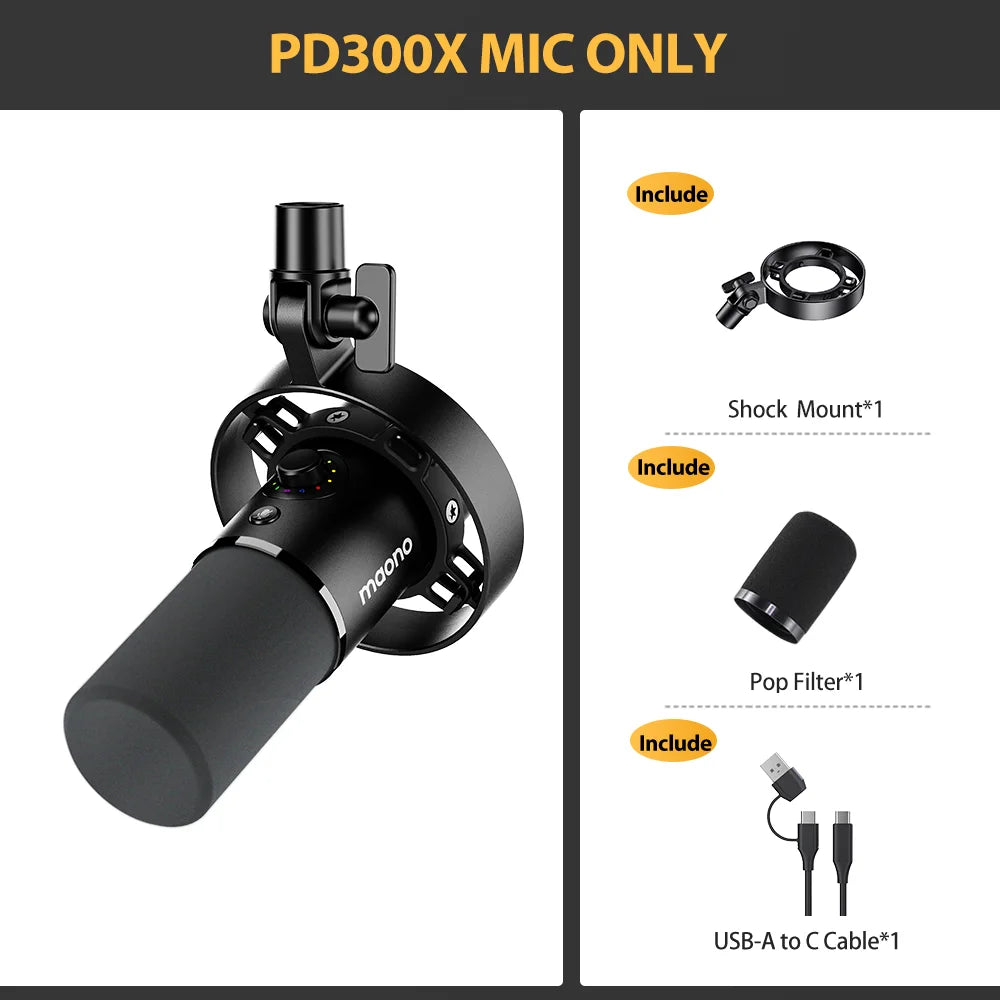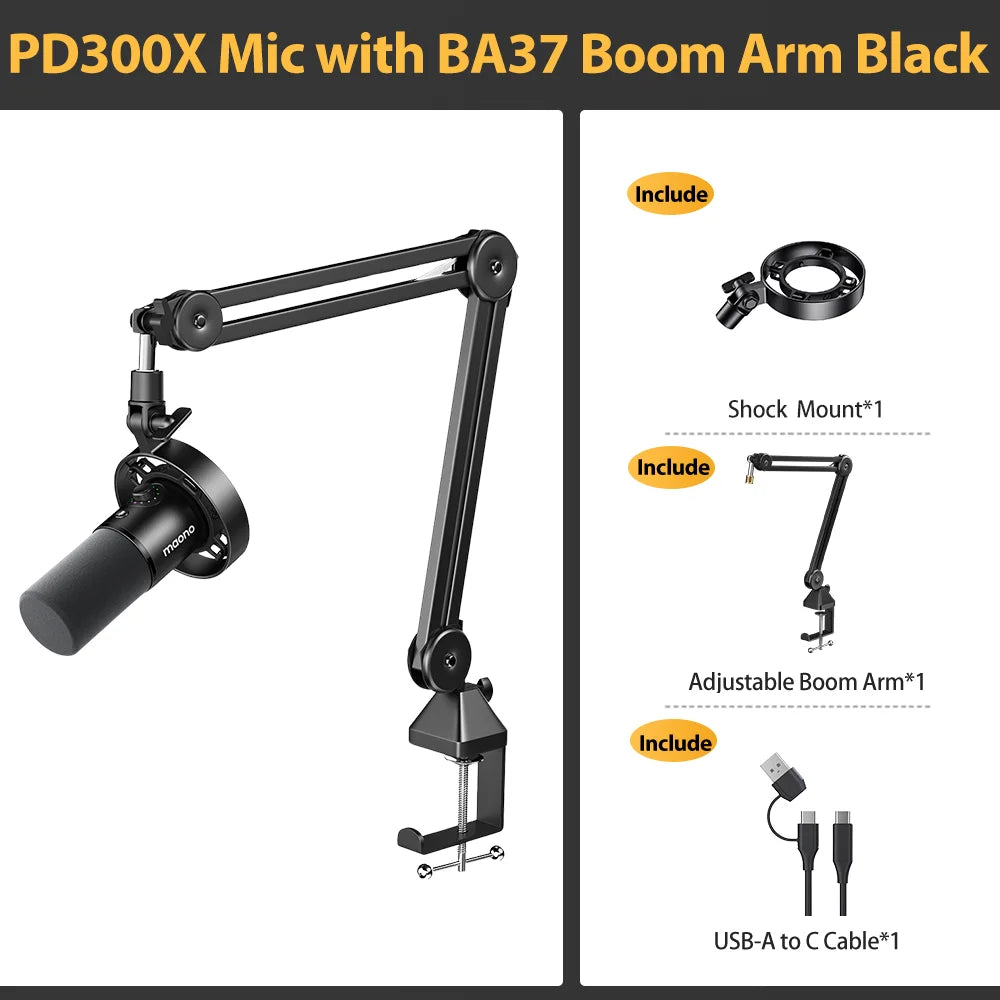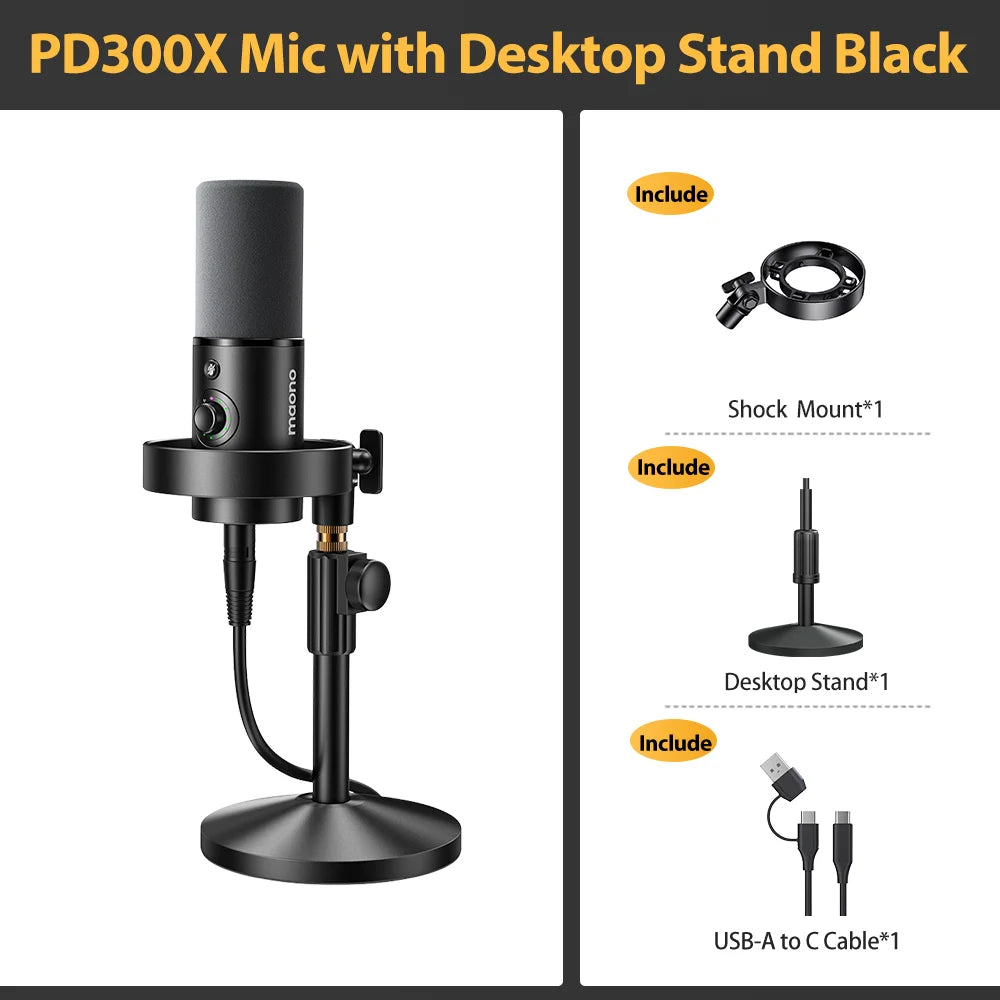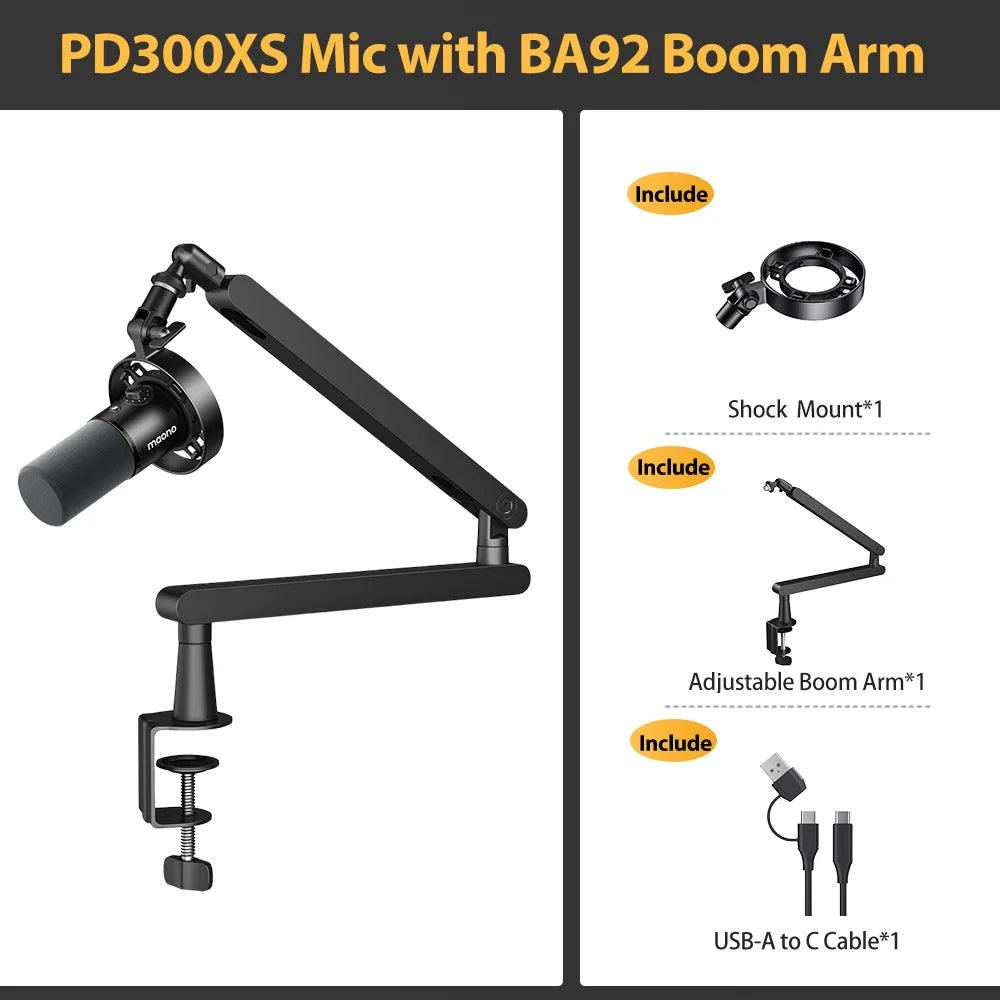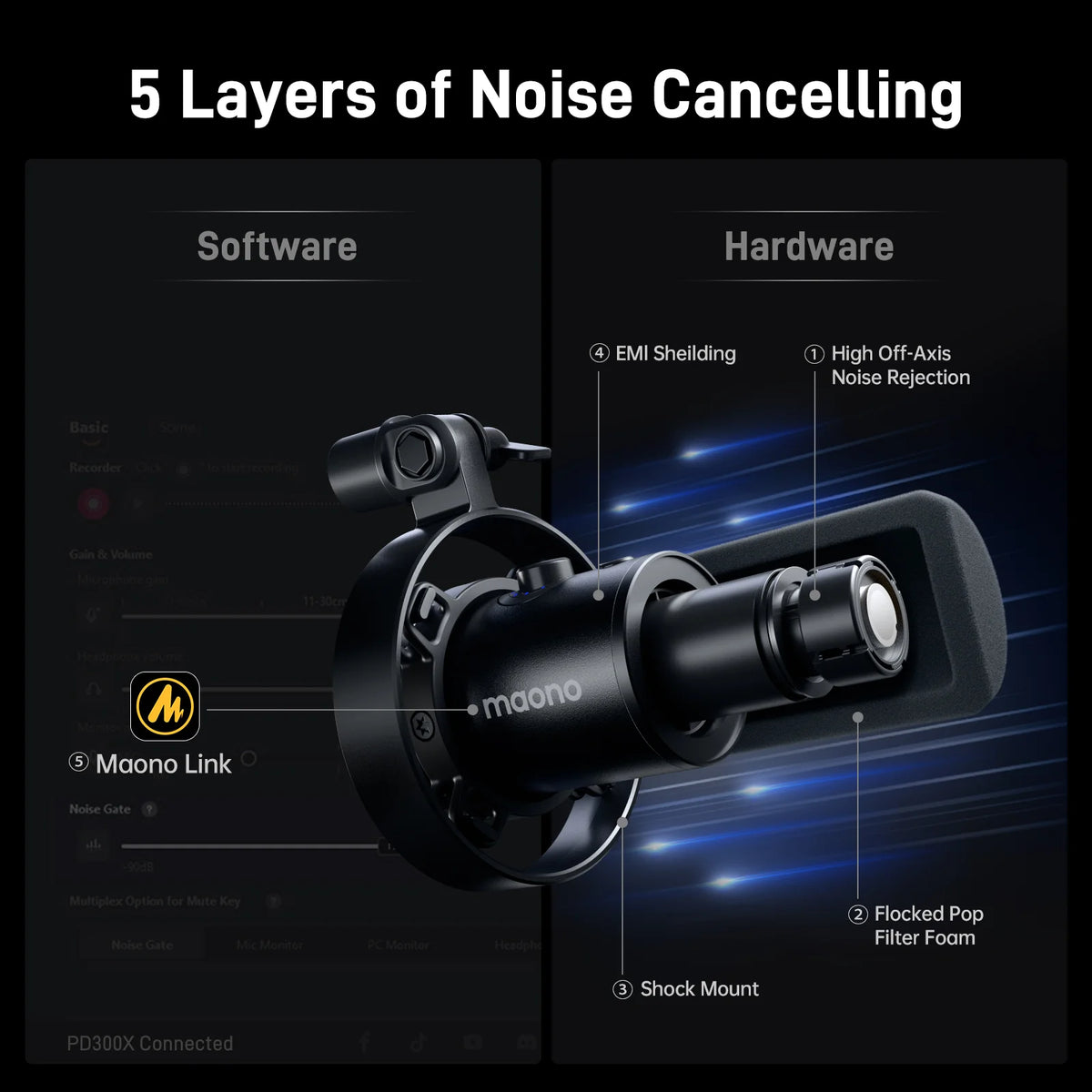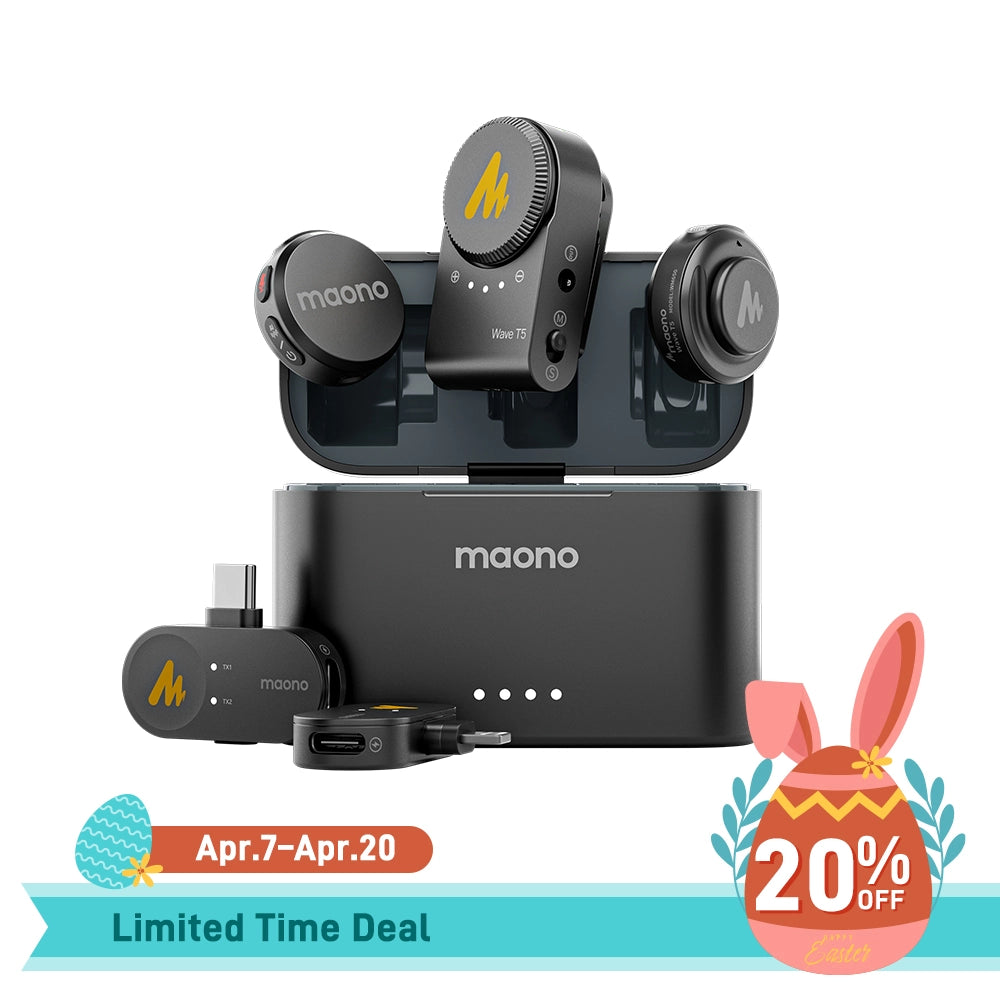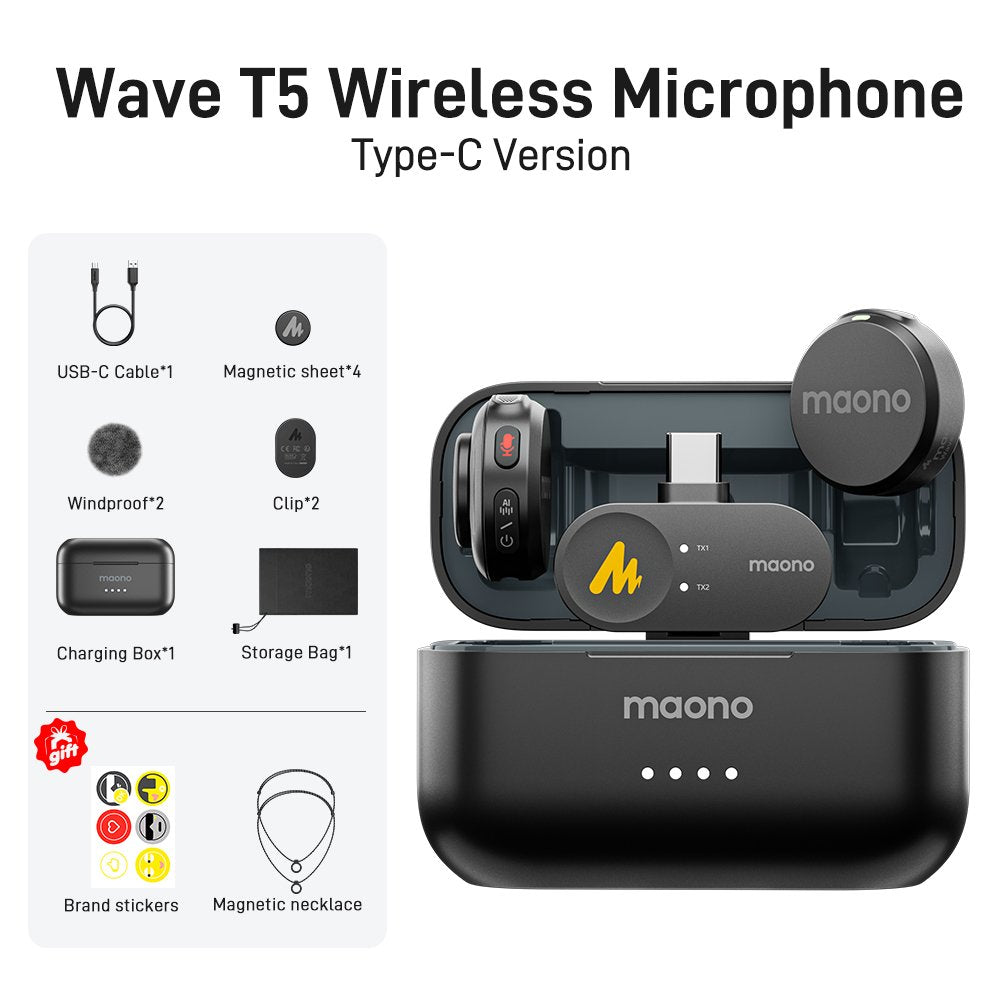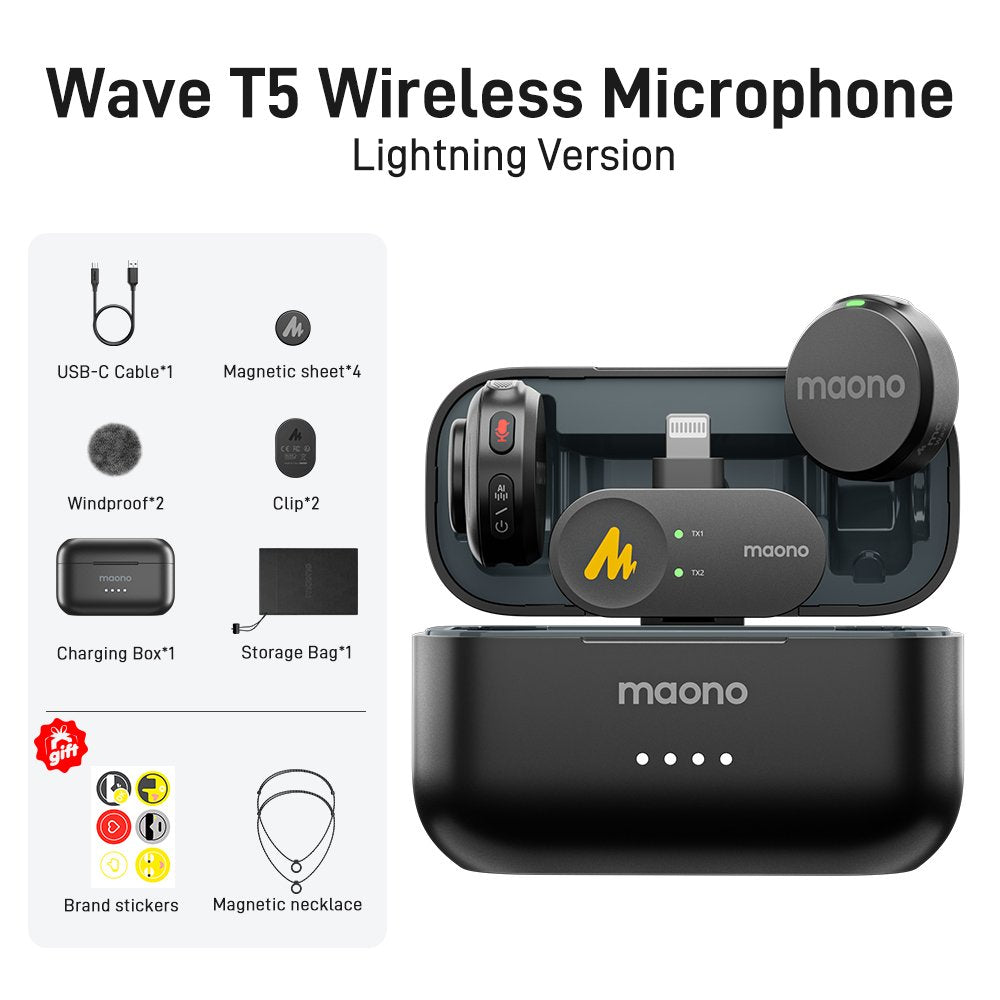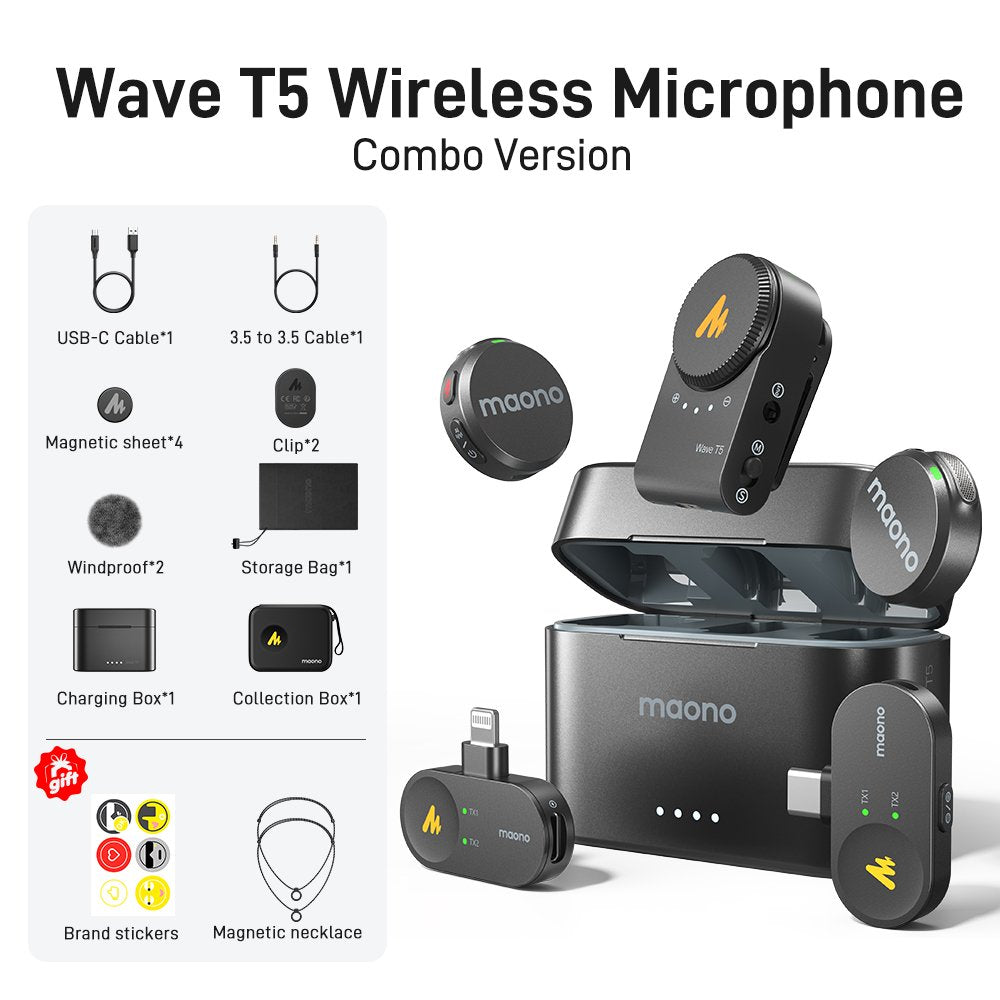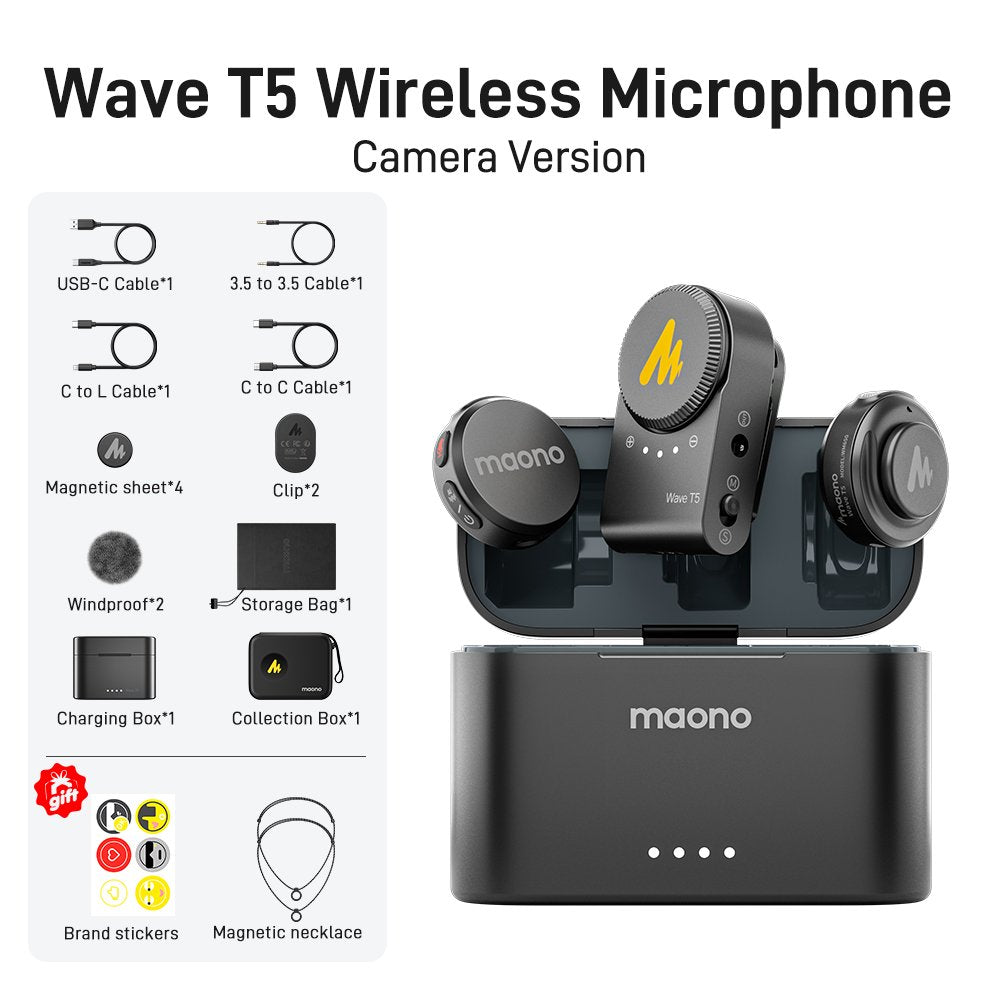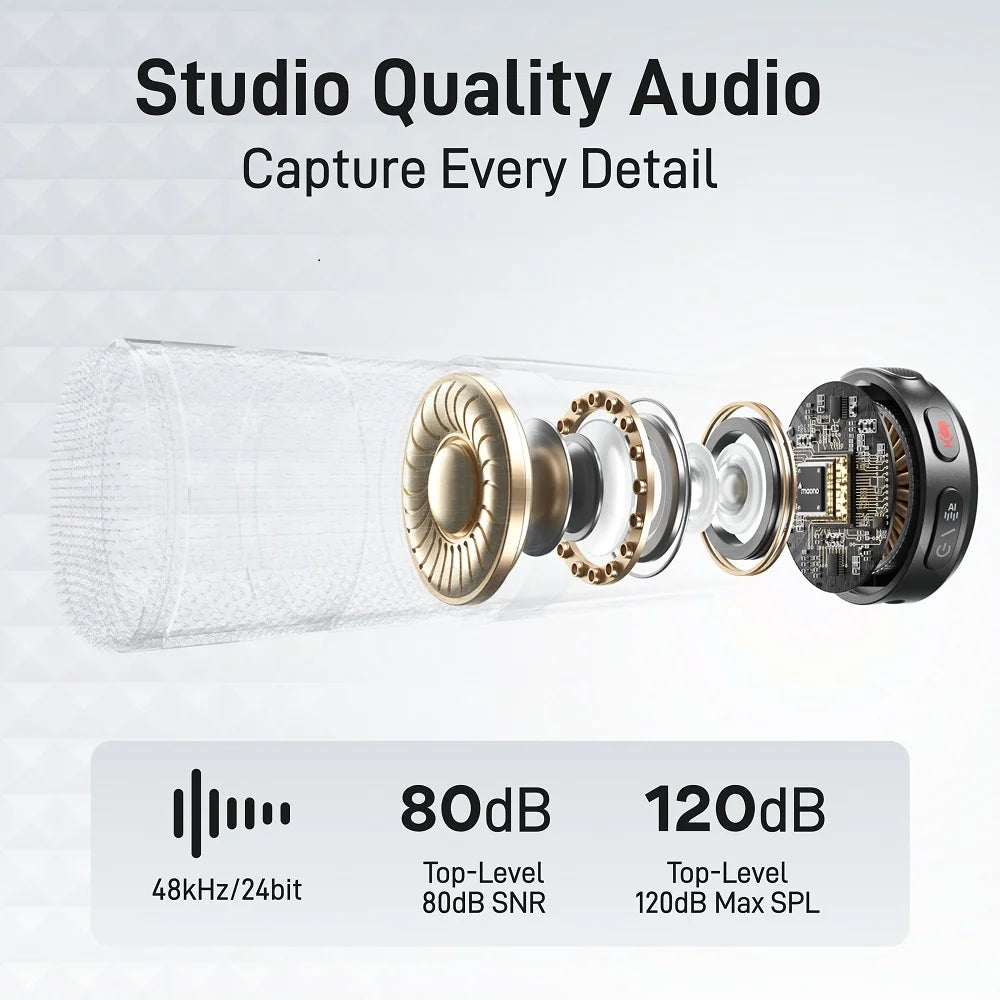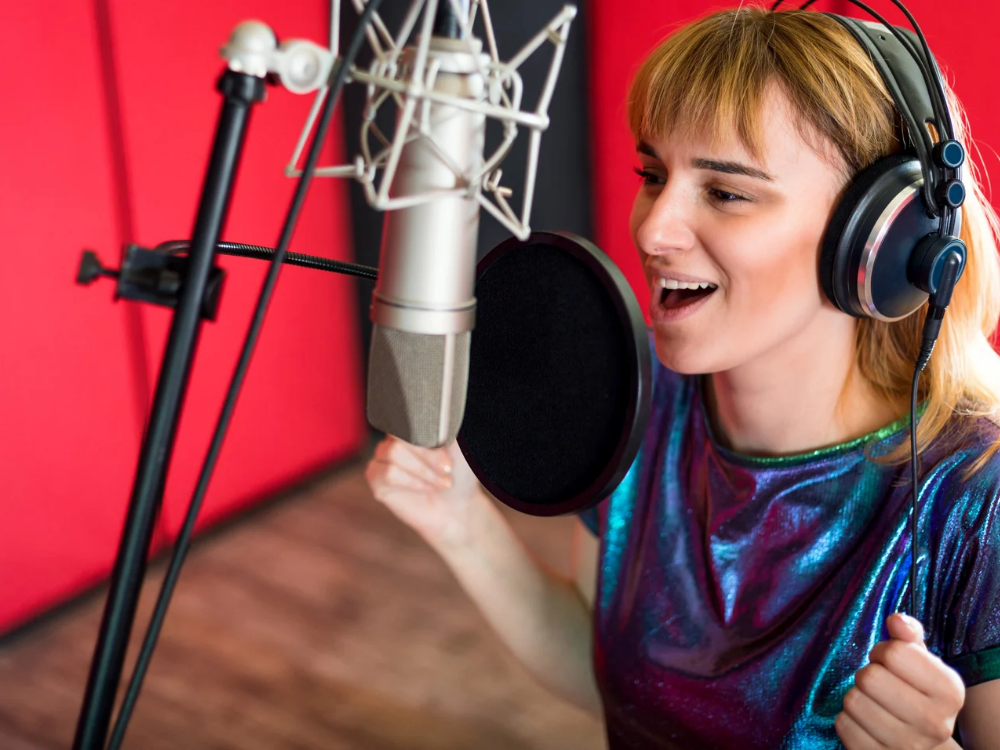Introduction to Different Types of Microphones
When it comes to recording or live performances, understanding the type of mic you need is crucial. Each type of mic offers unique features tailored to different uses, from podcasts to studio recordings. In this guide, you’ll find practical tips on how to choose the right mic for various applications. Whether it’s a dynamic, condenser, or ribbon microphone, we’ll explore the advantages and disadvantages of each type of mic and how they work for their intended purposes.
What’s a Microphone?
A microphone is a device that transforms acoustic waves into electrical signals, which can then be transmitted to devices like phones, sent to typical audio interfaces, or amplified to be heard by people far from the original sound source. Different types of microphones can be great tools for creation, including singing, streaming, gaming, podcasting, vlogging, and more. Among the innovative options available today, the three types of microphones we will discuss in this article are the most common and popular ones. You may have heard of some well-known, traditional microphone models on the market, but besides understanding these timeless versions, fundamental knowledge about the various types of microphones will certainly enhance your understanding of microphone technology.
A Comprehensive Guide on How to Choose the Right Type of Mic
Before getting a microphone, you should probably learn about some types of microphones first, actually, we can divide microphones into 3 types, including dynamic microphones, condenser microphones, and ribbon microphones.
1. Dynamic microphones: Durable and Versatile

What are dynamic microphones? It is actually a kind of microphone in which the sound waves cause a movable wire or coil to vibrate in a magnetic field and thus induce a current. Dynamic mic makes use of an electromagnetic field to produce an electric signal. When sound shakes the diaphragm, the coil vibrates and also generates an electric signal. Dynamic microphones are regularly utilized on Live stages, events, and also podcasting. The majority of dynamic microphones are with XLR connectivity.
The benefits of dynamic microphones are robust building, outstanding off-axis rejection, and less sensitivity to moisture and heat. To record vocals with clearness and also an all-natural tone, creators favor using dynamic microphones that focus on vocals while declining background noises. The disadvantages of dynamic microphones consist of poor high-frequency response, which provides dull sound. As well as the low level of sensitivity feature makes it difficult to be utilized in film work, due to the fact that lots of details will certainly be lost.
2. Condenser microphones: Ideal for Studio Recording

Condenser microphones, the most usual kind of microphones, make use of a capacitor to transform sound waves into electric signals. They are mainly used for recording, gaming, streaming, film production, podcasting, etc.
Unlike dynamic microphones, condenser microphones are fragile, sensitive to noises, and also much more affected by humidity and also temperature levels. Advantages of a condenser microphone consist of smaller size, louder audio signal, as well as flat frequency action that delivers rich details.
There are two sub-types of condenser microphones, consisting of large diaphragm condenser microphones as well as small diaphragm condenser microphones.
Large-diaphragm condenser microphones are usually larger and side addressed, delivering sound with engaging, rich details. Small diaphragm condenser microphones usually have a pencil-shaped design, providing neutral audio.
Dynamic microphones vs Condenser microphones
Dynamic and condenser mics are the most common and widely used microphone on the market.
Then, what are the main differences between these two kinds of microphones? Let's check the video below:
Actually, compared to dynamic mics, condenser microphones will be with higher clarity and sensitivity, and the sound quality is vivid and thick. but not turbid, but to its sensitivity, it is not quite suitable for places with a noise like some stages or outdoor places.
Because the generation of the sound signal of a dynamic microphone is mainly accomplished by the continuous movement of the wire coil closely connected to the diaphragm in the magnetic field according to the change of sound pressure, no DC working voltage is required. it will be easier to use and with low noise. The sound quality of the dynamic microphone is rich and full as well but it will be more strong in noise resistance.
3. Ribbon microphones: Vintage Sound Quality
A ribbon microphone is rare, expensive, as well as fragile. It is usually utilized in professional studios. Ribbon microphones are the most natural mics that you can use to capture the sound of an instrument, a voice, and even the ambiance of a room.

Similar Reading: Cardioid Mic vs Condenser: Key Differences, Best Uses, and FAQs
Comparisons of the Three Types of Mic: Dynamic, Condensers, and Ribbon Microphones
-
Dynamic Microphones
Dynamic microphones use an electromagnetic induction method to convert sound into an electrical signal. They have a diaphragm attached to a coil of wire, placed near a magnet. When sound waves hit the diaphragm, it moves, causing the coil to move within the magnetic field, generating an electrical current that represents the sound.
Types:
Moving-Coil Dynamic Microphones: These are the most common type of dynamic microphones. They are robust, can handle high sound pressure levels, and are ideal for live sound applications. They are known for their durability and reliability.
Ribbon Microphones: Ribbon microphones are a type of dynamic mic that uses a thin metal ribbon placed in a magnetic field. They are highly sensitive and offer a vintage sound quality with a smooth high-end and natural warmth.
Ideal Uses:
Live Sound: Due to their ruggedness and ability to handle high volumes, dynamic microphones are preferred for live performances and stage use.
Recording Loud Sources: Perfect for miking up loud sound sources such as guitar amplifiers and drums where high SPL handling is essential.
Broadcasting: Commonly used in radio and live broadcasting due to their reliability and low maintenance.
Advantages:
✅ Durability: Built to withstand rough handling and high sound pressure levels, making them ideal for live performances.
✅ No External Power Required: They operate without needing phantom power, making them simpler to use in various settings.
Feedback Resistant: Less susceptible to feedback in live environments.
✅ High SPL Handling: They can handle high sound pressure levels without distortion, making them ideal for loud sound sources like guitar amplifiers and drums.
✅ Affordable: Generally less expensive than condenser microphones, offering good performance for a lower price.
Disadvantages:
❌ Low Sensitivity: Less sensitive to quiet sounds and high-frequency detail compared to condenser mics.
❌ Limited Frequency Response: Typically have a narrower frequency response range.
Unique Features:
✅ Typically use a diaphragm attached to a coil of wire within a magnetic field to convert sound vibrations into electrical signals.
Popular Models:
Maono PD400X or PD400XS (with the boom arm): Professional microphone mostly used by content creators for streaming, gaming, or music recording.
According to Gadgetry Tech influencer from YouTube: "The overall quality of PD400X microphone is a very clear microphone that has good warmth and detail. Honestly, the voicing of this PD400X mic is incredible."

Shure SM58: Widely used for vocals in live settings.
Shure SM57: Commonly used for instruments, especially snare drums and guitar amplifiers.
Sennheiser e835: Popular for both vocals and speech applications.
Typical Applications:
✅ Live performances and concerts.
✅ Public speaking events.
✅ Recording loud sound sources (like guitar amplifiers and drums).
-
Condenser Microphones
Condenser microphones use a capacitor (condenser) to convert sound into an electrical signal. They have a diaphragm and a backplate that form a capacitor. When sound waves hit the diaphragm, it moves, changing the distance between it and the backplate. This change in distance alters the capacitance, creating an electrical signal.
Types:
Large-Diaphragm Condenser Microphones: These have a larger diaphragm and are known for capturing a rich, warm sound with a broad frequency response. They are ideal for studio vocals, acoustic instruments, and broadcast applications.
Small-Diaphragm Condenser Microphones: Featuring a smaller diaphragm, these microphones are designed for precision and detail. They excel in capturing high frequencies and are often used for recording overheads, acoustic guitars, and other instruments where accuracy is crucial.
Common Applications:
Studio Vocals: Large-diaphragm condenser microphones are favored for their warmth and clarity, making them ideal for recording vocals in a studio setting.
Acoustic Instruments: Both types are used to capture the intricate details of acoustic instruments, with small-diaphragm models often used for instruments like pianos and guitars.
Broadcasting and Podcasting: Their clear and accurate sound makes them popular for voiceover work and broadcasting.
✅ Wide Frequency Response: Excellent for picking up transient sounds with clarity, making them great for vocals and acoustic instruments.
✅ High Sensitivity: Can capture quiet sounds, details, and nuances in audio very effectively.
✅ Versatility: Suitable for both studio recording and vocals.
Disadvantages:
❌ Fragile: More sensitive to physical shock and moisture, making them less durable than dynamic mics.
❌ Requires Phantom Power: Needs external power source or batteries, which can limit their usability in some situations.
❌ Feedback Prone: More susceptible to feedback in live sound situations.
Unique Features:
✅ Utilize a thin diaphragm placed close to a backplate, requiring a power source to maintain an electric charge.
Popular Models:
Audio-Technica AT2020: Great for vocal and instrument recordings.
Neumann U87: A classic studio microphone, ideal for vocals and instruments.
Rode NT1-A: Renowned for its quiet operation and clarity, perfect for studio vocals.
Typical Applications:
✅ Studio recordings of vocals, guitar, and strings.
✅ Podcasting and voice-over work.
✅ Capturing audio for film and multimedia

-
Ribbon Microphones
Ribbon microphones were first developed in the 1920s and were a staple in early recording studios due to their smooth, natural sound reproduction. They use a thin ribbon of metal, suspended between the poles of a magnet, to capture sound. As sound waves hit the ribbon, it moves within the magnetic field, generating an electrical signal.
Unique Characteristics:
- Natural Sound: Ribbon microphones are renowned for their warm, vintage sound quality with smooth high frequencies and a natural midrange. They excel in capturing the tonal richness of sources.
- Figure-8 Polar Pattern: Most ribbon microphones have a bi-directional (figure-8) polar pattern, capturing sound equally from the front and rear while rejecting side sounds.
- Delicate Construction: Ribbon microphones are more fragile compared to dynamic and condenser microphones. They require careful handling and are sensitive to high sound pressure levels.
Studio Recording: Ideal for recording instruments where a vintage, smooth sound is desired, such as electric guitars, brass, and strings.
Room Ambience: Their bi-directional pattern makes them suitable for capturing room ambiance and adding a natural depth to recordings.
Vocals: Used for vocals in certain contexts where a warm, smooth character is preferred. However, they are less common for modern vocal recording due to their sensitivity and handling requirements.
Understanding these types of microphones and their specific features and applications can help you decide which type of microphone you would like to purchase based on your recording needs, ensuring that you select the right microphone for your particular case.
Advantages:
✅ Natural Sound Reproduction: Known for producing a warm, smooth tonal quality, excellent for capturing the natural character of instruments.
High Frequency Detail: Can capture high frequencies and transient sounds without harshness.
✅ Bi-directional Pickup Pattern: Good for capturing sound from both the front and back, making them useful for certain recording techniques.
Disadvantages:
❌ Fragility: More sensitive to physical damage and high sound levels; they can be easily damaged.
Requires Care: Often requires special handling and storage to ensure longevity.
❌ May Need Preamp: Generally require a good quality preamp to boost the low output levels.
Unique Features:
✅ Consist of a thin metal ribbon suspended in a magnetic field, generating an electrical signal when sound waves hit it.
Popular Models:
Royers R-121: A favorite among engineers for guitar amps and strings.
AEA R84: Well-regarded for vocals and acoustic instruments.
Shure KSM313: Versatile for various applications, offering both character and flexibility.
Typical Applications:
✅ Studio recordings of electric guitar and brass instruments.
✅ Vocals, especially in genres requiring warmth and depth, like jazz and blues.
✅ Use in situations where an ambient or natural sound is desired.
Summary
Dynamic microphones are ideal for live performances and loud sound sources due to their durability and feedback resistance.
Condenser microphones excel in studio recordings, offering sensitivity and detail suitable for vocals and quiet instruments.
Ribbon microphones provide a natural sound with a warm demeanor, making them great for specific recording scenarios, but they require more careful handling.
Choosing the right microphone depends on the application and the desired sound characteristics.
Comparison Table of the Different types of Microphones
Here’s a comparison table highlighting the differences between dynamic, condenser, ribbon, and lavalier microphones:

Do these types of microphones record differently?
One important feature of a microphone is its polar pattern, which tells you where it can pick up sound from. Some microphones only capture sound from right in front of them, while others can pick up sound from all around. There are six types of polar patterns that determine where it picks up sound from:
cardioid, the heart shape pattern mic (picks up sound mainly from the front, rejecting sound from the sides and the back), hypercardioid (picks up sound waves mostly from the front and a sizeable pickup area at the back), omnidirectional (picks up sound from all directions), lobar-can focus sound source with clarity like a laser for shotgun mics, and bidirectional or figure-8 (picks up sound from the front and back).
The three main types of polar patterns commonly used are cardioid, omnidirectional, and bi-directional. Read more about cardioid, omnidirectional, and bi-directional polar patterns in this article.
What is the Proximity Effect?
The proximity effect happens with most microphones except those that pick up sound from all directions (omnidirectional mics). This effect means that the closer the mic is to the sound source, the more it boosts the bass. For example, if you put a mic close to your mouth, your voice sounds deeper. This effect is especially noticeable with deep sounds like male voices. Radio hosts use it to make their voices sound fuller and more powerful.
While the proximity effect can make sounds richer, you need to be careful not to add too much bass. Singers often use pop screens to reduce popping sounds from letters like "P" and "B," which the proximity effect can amplify.
The proximity effect can be tricky when miking an acoustic guitar close to the soundhole, as it can make the bass too strong. In such cases, using an omnidirectional mic can help because it doesn't have the proximity effect.
How to select the appropriate kind of mics for different applications?
Choosing the right type of mic depends on your specific needs, whether for live performances or studio recording.
Practical Tips for Microphone Selection
Before choosing a microphone, you should know where it will be used—whether for gaming, recording, streaming, or vlogging.
Due to the varying situations and uses, the choices of microphones differ. For example, if you want to buy the best mic for studio recording, you won’t select a dynamic mic. Also, you need to consider your budget for the microphone.
1. Microphone for Gaming and Streaming
Beginner gamers and streamers can choose the entry-level USB condenser gaming microphone, which provides basic practical functions while ensuring good audio quality. If you are in need of more functions and flexibility, you can consider a dual-connectivity microphone.
For gamers, it is important to use a microphone that effectively rejects ambient noises, like mouse clicking, keyboard clicking, and appliance low-frequency hiss. With a cardioid polar pattern gaming microphone, gamers can record clear audio. Some microphones also include companion software, offering advanced audio processing options like low-cut, tone, RGB customization, etc.
Streamers need to have real-time monitoring of recording, a microphone with a 3.5mm audio connector and mic gain control function will enable streamers to adjust mic gain accordingly.
2. Microphone for Podcasting
You may need to record podcast shows in different places, including home-studio, cafes, or a friend's home. Some of the places are not sonically treated, which requires good noise-canceling performance as well as the portability of microphones. Therefore, when selecting a microphone for podcasting, you will need to make sure it delivers a natural voice and features off-axis rejection performance and portability.
A condenser/dynamic microphone with an XLR connector will suit podcasters’ need for professional-level audio. You can connect the XLR microphones to a traditional audio interface or mixer for custom or preset audio effects, and separate control of microphone gain, accompaniment volume, and recording volume.
3. Microphone for Vlogging
Microphones for vlogging require the most portability, audio quality, and great compatibility. Vloggers often use a camera or a mobile phone for vlogging creation, therefore, compatibility with phones and cameras is a must. The wireless microphone designed for vlogging mainly features an omnidirectional polar pattern, condenser type, and rechargeable battery. To satisfy different needs, brands usually release single versions and dual versions. A charging case for storage and charging microphones is also available in some of the wireless microphone systems, like Maono WM821 wireless lavalier microphone.
Let’s take Maono microphones types as an example, and see if you have enough budget, which kind of microphone you should get?
1.Budget Under 50 USD
If you are planning to spend less than 50 USD for a microphone, obtaining a simple-to-use practical USB microphone is feasible. Maono PM461S is a great option you can think about. It is an all-in-one USB microphone cardioid microphone, compatible with Mac and Windows OS systems, and with a boom arm. Plug and play design, high-quality audio, and wide compatibility make it an optimal microphone for PC gaming, live streaming, and online conference. It can supply a quick and effective option for your production.
2.Budget within 50-100 USD
Within the variety of 50-100 USD, there are a lot of excellent USB microphones, Maono’s HD300T USB/XLR Dynamic Broadcast Microphone also delivers high-quality audio while offering USB/XLR outputs. 60-100 USD microphone usually supplies more features like dual polar patterns, companion software with advanced audio processing options, and dual audio outputs.
3.100 USD or above
A lot of XLR microphones are above 100 USD, for example, Maono PM500 studio-quality XLR microphone. The professional-level condenser mic is designed for voice-over, podcasting, streaming, and also recording instruments. It utilizes imported components to make circuits, and the well-designed capsule delivers natural and transparent audio. A full metal body and included aluminum box add durability.
Frequently Asked Questions:
1. What is the main difference between condenser and dynamic microphones?
Answer:
The primary difference between condenser and dynamic microphones lies in their construction and application:
Condenser Microphones: These microphones use a capacitor to convert sound into an electrical signal. They require external power, usually provided by phantom power (48V), to operate. Condenser mics are known for their high sensitivity, broad frequency response, and low self-noise, making them ideal for capturing detailed and nuanced sounds, such as vocals and acoustic instruments in studio settings.
Dynamic Microphones: Dynamic microphones use an electromagnetic induction method, where a diaphragm attached to a coil moves within a magnetic field to generate an electrical signal. They do not require external power and are more rugged and durable. Dynamic mics are well-suited for high-pressure sound sources like guitar amplifiers and drums, and they are commonly used in live sound applications due to their ability to handle high sound pressure levels without distortion.
2. Are ribbon microphones suitable for recording vocals?
Answer:
Ribbon microphones can be used for recording vocals, but they are less common than condenser microphones for this purpose. Ribbon mics are known for their smooth, natural sound and are particularly valued for their warm tonal quality and vintage character. They capture sound with a bi-directional (figure-8) polar pattern, which can add depth and a sense of space to recordings.
However, ribbon microphones are more delicate and can be sensitive to high sound pressure levels. They are typically used in situations where a vintage sound or specific tonal characteristics are desired. For most modern vocal recordings, condenser microphones are preferred due to their high sensitivity and ability to capture fine details. Ribbon microphones are often chosen for their unique tonal qualities and are used in controlled studio environments where their fragility can be managed.
3. What are the advantages of using a small-diaphragm condenser microphone over a large-diaphragm condenser microphone?
Answer:
Small-diaphragm condenser microphones offer several advantages over large-diaphragm condensers, particularly in specific recording scenarios:
Precision and Detail: Small-diaphragm condensers are known for their ability to capture high frequencies with greater precision and detail. This makes them well-suited for recording instruments that require accurate sound reproduction, such as acoustic guitars, pianos, and strings.
Transient Response: They generally have a faster transient response, meaning they can capture quick changes in sound more effectively. This is beneficial for capturing the intricate details of fast-playing instruments and percussive sounds.
Versatility: Small-diaphragm condensers often come with multiple polar patterns and are used for overhead miking in drum kits and capturing room ambiance. Their ability to handle high SPL (sound pressure levels) also makes them versatile for various recording situations.
In contrast, large-diaphragm condensers are often favored for their warmth and ability to capture a broader frequency range, which is ideal for vocals and other sources where a rich, full-bodied sound is desired. Both types have their strengths and are chosen based on the specific requirements of the recording application.
4. What is the best type of mic for singing?
A condenser microphone is generally the best choice for singing due to its sensitivity and ability to capture detailed vocal nuances. It’s ideal for studio environments where precision and clarity are crucial.
5. Which type of mic should I use for podcasting?
A dynamic microphone is recommended for podcasting, as it is durable, reduces background noise, and works well in less controlled environments. However, condenser microphones can also be used if you’re in a quiet, sound-treated space.
Conclusion: Choosing a Microphone Wisely
Based on the different microphone types you’ve learned about above, you should now know which type of mic to get if you want to start a podcast studio or use it for any other purpose. I must say that choosing the right type of mic can enhance your work, elevate your career, and help you discover new possibilities for your voice. Check out Maono's top microphones now and find the perfect type of mic to elevate your recording game!
More Related Articles:
Guide to Choosing the Best Song Recording Microphone for YouTube Videos
How to Achieve Professional USB Recording at Home: Best USB Microphones for Voice
Guide to Professional Condenser Microphones: Top Picks for Recording



